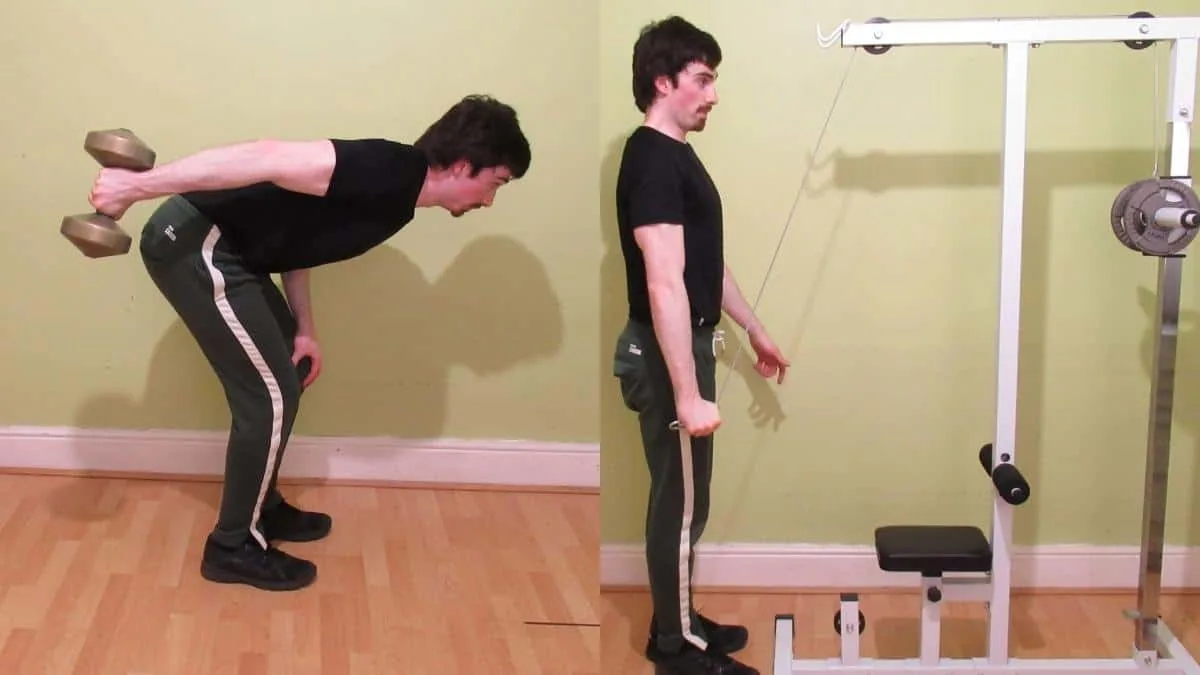If you’re looking for some highly effective isometric tricep exercises to improve your triceps strength, size, and endurance, then you’re in the right place.
These safe tricep exercises are ideal for both rehabilitation and recreational strength training. Serious weight lifters can also use these exercises to add intensity to their workouts.
Related Workouts:
The 6 best isometric tricep exercises
Here are 6 of the best isometric triceps exercises for strengthening the backs of your arms. Crucially, I’ve picked movements that genuinely challenge your triceps in a safe and effective manner. You’ll see what I mean in just a moment.
1. Single-arm isometric pushdown
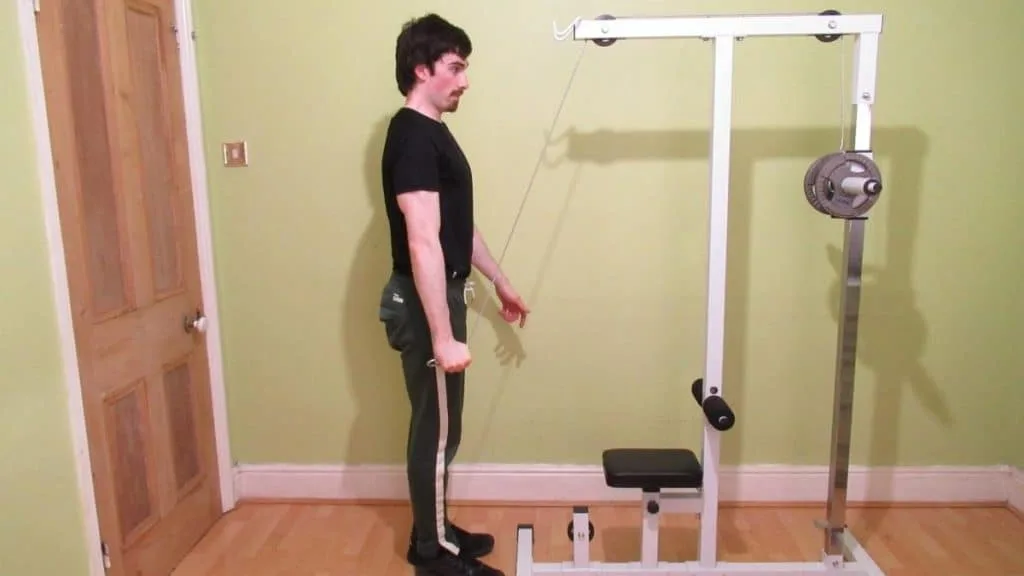
If I could only do one isometric tricep exercise, it would be the single-arm pushdown because cables are practically built for isometric training. At least it feels that way when you’re contracting your triceps.
Before you begin, you need to know that the further you move your shoulder behind your torso, the more contracted your triceps becomes.
With this anatomical fact in mind, you’re going to perform this isometric tricep pushdown with your shoulder in slight extension, which is to say, slightly behind your body. This positioning will force you to contract your triceps harder, which makes the movement more effective.
- Remove any attachments from one side of the cable crossover.
- Grab the end of the high pulley and take a step or two away from the machine.
- Move your shoulder back so that it’s slightly behind your torso.
- Flex your triceps until your elbows reach full extension.
- Hold the contraction for 15-25 seconds.
2. Isometric tricep kickback
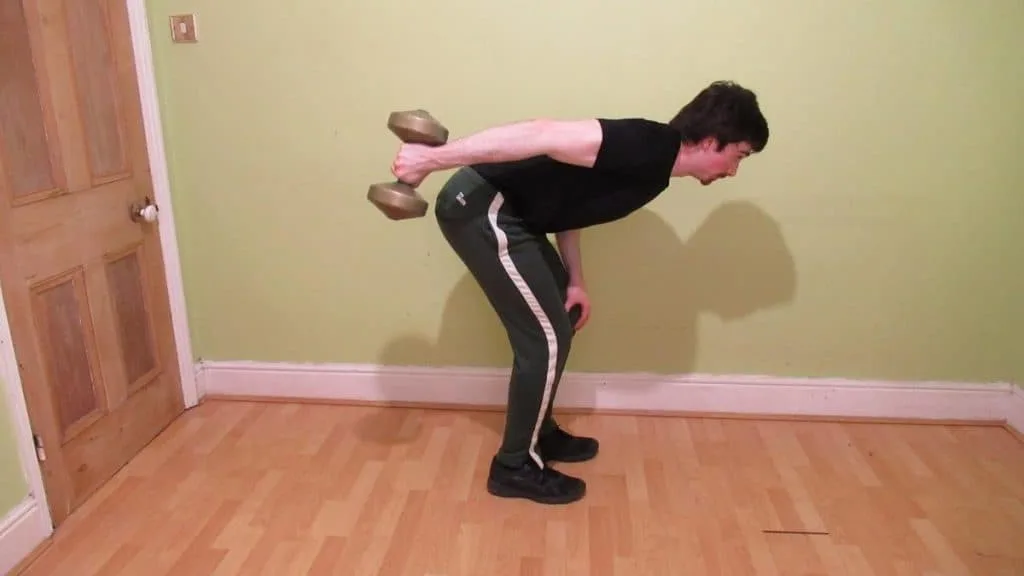
The isometric tricep kickback is very similar to the isometric single-arm pushdown that you saw above in that it trains your triceps in their contracted position (when your shoulders are behind your body).
The difference is that you’ll be using dumbbells instead of cables. That said, you can certainly use cables or even resistance bands for iso kickbacks if you’d prefer.
Just make sure to lift really light on the exercise. Even a pink dumbbell that weighs 2 lbs will feel challenging when you’re doing an isometric kickback.
To really improve your isometric strength, you can hold the contraction for 15-25 seconds. Alternatively, you can combine isometrics with your usual kickback reps by holding the peak contraction for 3-5 seconds at the top of each rep. The choice is yours.
- Grab a pair of very light dumbbells, and then bend over at your waist (get your torso as close to parallel as possible).
- Move your shoulders back so that they’re level with your upper body.
- Flex your triceps to kick the weights back. Keep going until your elbows are fully locked out.
- Hold the peak contraction for 15-25 seconds.
3. Isometric tricep extension
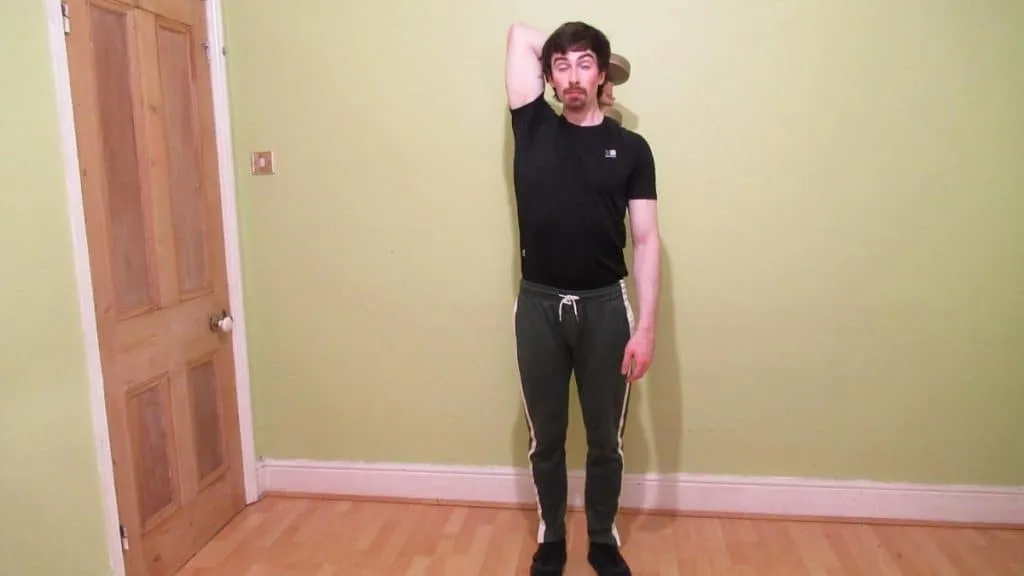
The triceps respond excellently to heavy weighted stretches, which is why I’ve included the isometric triceps extension in this workout.
I recommend the single-arm overhead extension because you can really stretch the long head of your triceps while ensuring that both of your arms get similar amounts of stimulation.
However, you can also do an isometric lying tricep extension if you’d like. As long as your shoulders are behind your head (regardless of whether you’re standing up or lying down), then you’re doing the isometric triceps extension correctly.
- Grab a dumbbell and press it over your head.
- Bend your elbows and lower the weight behind your head. You should feel a strong stretch in your triceps.
- Hold the weighted stretch for 15-30 seconds and repeat with your other arm.
4. Isometric tricep dips

Dips are one of those triceps isometric exercises that you can do pretty much anywhere. All you need is a stable surface like a chair, bench, or sofa that you can place both your hands on.
Obviously, you want to hold the tricep dip position when your elbows are bent, not when they’re locked out.
Also, if isometric tricep dips become too easy, then you can also do isometric upright dips on a set of dipping handles or parallel bars, which will use a much larger percentage of your body weight as resistance.
- Face away from the bench/chair and then place your hands on the seat in a palms-down position.
- Extend your legs out in front of you and straighten your arms.
- Bend your elbows slightly so that you feel a deep stretch in your triceps.
- Hold this position for 15-25 seconds.
5. Isometric rope pushdown
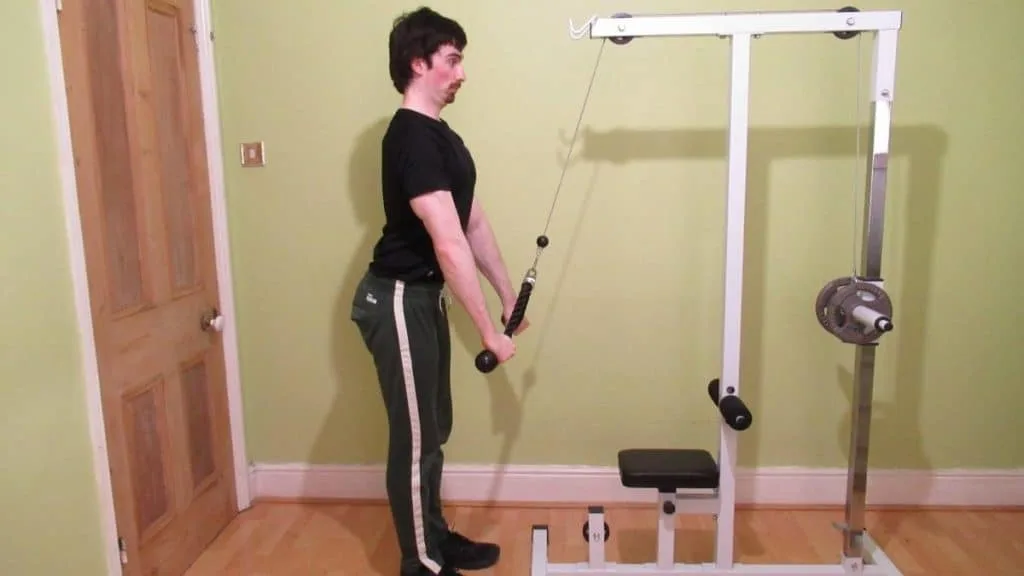
The isometric rope pushdown will teach you how to flex your triceps, which, in turn, will improve your mind-muscle connection.
The trick is to spread the ends of the rope so that you can intensify the peak contraction and make your triceps contract harder isometrically.
Again, you can hold the peak contraction for a prolonged period of time to really work on your muscular endurance and isometric strength.
Or you can just do 3-5 second isometrics on your usual pushdown reps as an intensity technique or a finisher.
- Connect a triceps rope to a high pulley and grab it with a firm grip.
- Take a step away from the cable station and move your shoulders back so that they’re in line with your torso.
- Flex your triceps to push the rope down toward the ground. Keep going until your elbows are locked out.
- Hold the contraction for 15-25 seconds.
6. Isometric diamond push-ups
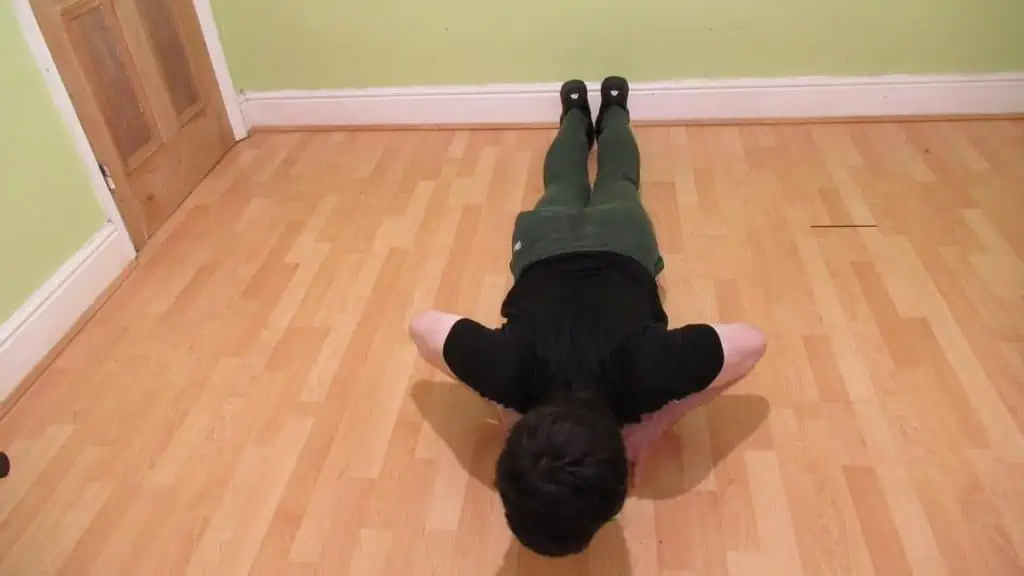
Out of all the isometric exercises for your triceps, isometric diamond push-ups are one of the easiest to perform because they require absolutely no equipment.
All you do is lower your chest to the ground and then hold the position for 15-30 seconds (or as long as you can). While isometric diamond push-ups are definitely a triceps-dominant exercise, they’ll also work your chest, front delts, and abs as well.
- Place your hands on the floor in front of you with your fingers and thumbs touching so that they form a diamond shape.
- Extend your legs back and put your feet together.
- Tighten your core and keep your back flat. Don’t let your hips sag!
- Tuck your elbows into your sides and then lower your chest toward the ground.
- Stop just before your chest touches the floor.
- Hold this position for 15-30 seconds or for as long as you can.
A full isometric tricep workout
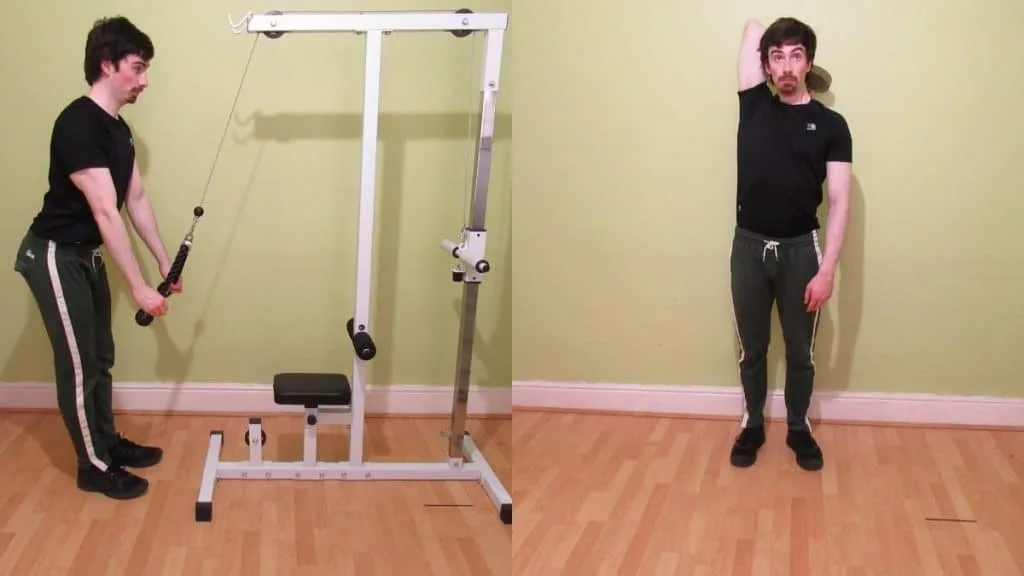
This isometric tricep workout is designed to build isometric triceps strength that will carry over into your other weight training workouts.
If you’re looking for a routine for rehabilitation, I recommend picking 2-3 exercises and just doing 1-2 sets per exercise. Isometric tricep workouts are very challenging, so you don’t want to overexert yourself by doing too many sets if you’re not used to resistance training.
1: Single-arm isometric pushdown — 2-3 sets of 15-25 second holds
2: Isometric overhead extension — 2-3 sets of 15-25 second holds
3: Isometric rope pushdown — 2-3 sets of 15-25 second holds
4: Isometric bench dips — 2-3 sets of 15-25 second holds
The verdict: Should you do isometric exercises for your triceps?
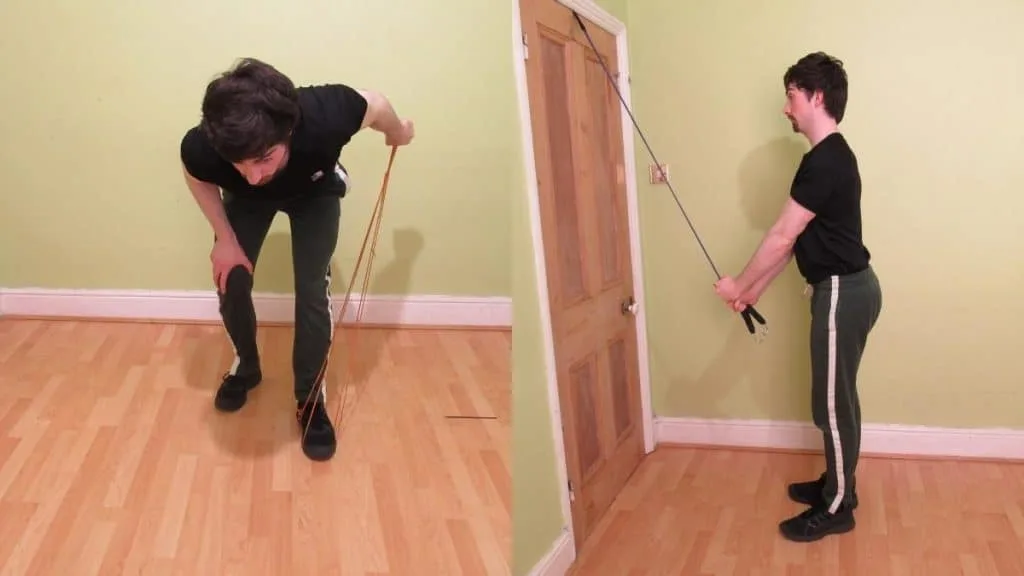
Isometric tricep exercises are highly versatile. You can do isometric tricep workouts in order to build up the muscle strength to do dynamic exercises. Or, you can do them to increase your muscular endurance, which will help you to perform more reps per set.
Alternatively, you can do isometric exercises for your triceps in order to intensify your workouts. For example, rather than holding the peak contraction for only a split second during pushdowns and kickbacks, you can hold each contraction for a full 3-5 seconds to really engage your triceps and improve your lockout strength.
Note that for some isometric triceps exercises—overhead extensions, tricep dips, diamond push-ups—you’ll want to hold the stretched position (where your elbows are bent) rather than the contracted position.
References
- Patterson, B. (2014, October 13). Science of Lifting: Isometrics. Elite FTS. https://www.elitefts.com/education/training/powerlifting/a-primer-on-isometric-training-for-strength-and-power/
- WebMD. (2017b, February 10). Do I Need Physical Therapy for Tennis Elbow? https://www.webmd.com/pain-management/physical-therapy-for-tennis-elbow

